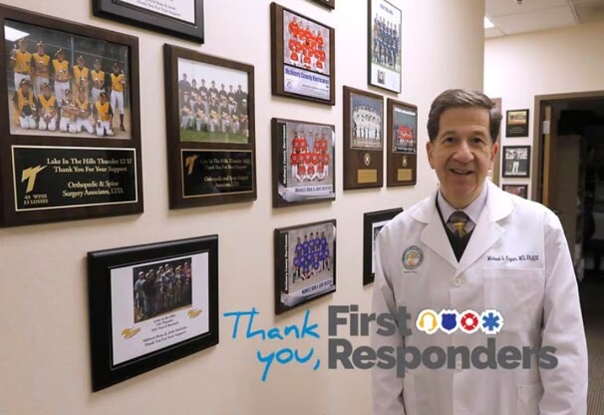Reverse Shoulder Replacement: A New Kind of Shoulder Replacement
- Category: Blog
- Posted On:
- Written By: Joshua Alpert, MD

Shoulder arthritis and rotator cuff injuries are two of the most common shoulder complaints seen in the office of an orthopedic sports medicine surgeon every day.
The rotator cuff is the main tendon in the shoulder that helps keep the ball in the socket, and assists in elevating the arm.
Shoulder arthritis occurs from wear and tear over time. This happens when the cartilage or shock absorbing part of the ball and socket are degraded, leading to pain and stiffness. Once the degeneration is bad enough, patients are left with bone on bone. A decision is made to live with the pain, try temporary fixes like cortisone injections, or eventually consider a conventional shoulder replacement, surgery where the ball and socket are replaced with metal and plastic.
Shoulder joint replacement surgery can effectively ease pain from shoulder arthritis. Most people experience improved shoulder function after this surgery.
To have a good result from a shoulder replacement, the shoulder needs a functioning rotator cuff to remain stable. A shoulder without a functioning, intact rotator cuff can develop lead to the shoulder joint or a shoulder replacement wearing out due to the abnormal motion and wear and tear over time. This type of wear and tear arthritis with a torn rotator cuff in the shoulder is called (rotator) cuff tear arthropathy.
So what is a patient or their doctor to do, when the rotator cuff is torn, and a patient has developed arthritis? What is a patient to do when a standard shoulder replacement will not work, since there is no rotator cuff to keep the ball and socket in the normal position?
The answer was to design a shoulder replacement that worked differently than the real shoulder joint. A new shoulder replacement was developed, one where the socket and metal ball are reversed, placing the ball portion of the shoulder where the socket use to be and the socket where the ball or humeral head use to be. Thus, the name of a REVERSE SHOULDER REPLACEMENT
This is a newer procedure that can help many of these patients with rotator cuff arthropathy (arthritis of the shoulder without a working rotator cuff) and provide pain relief as well as reestablish a stable functioning shoulder.
A reverse total shoulder replacement works for people without an intact rotator cuff because it relies on different muscles to move the arm. In a patient with a large rotator cuff tear that can not be fixed, who also has arthritis, these rotator cuff muscles no longer function. The reverse total shoulder replacement relies on the deltoid muscle, instead of the rotator cuff, to power and position the arm.
When a patient presents to the office with shoulder arthritis and a rotator cuff tear, conservative measure are tried first. A trial of anti-inflammatories, a cortisone injection, lubricant injections, and physical therapy are attempted prior to considering surgery.
Reverse total shoulder replacement may be recommended if you have, a completely torn rotator cuff that cannot be repaired, a rotator cuff tear with arthropathy (arthritis), a previous shoulder replacement that was unsuccessful, and severe shoulder pain and difficulty lifting your arm away from your side or over your head
This procedure to replace your shoulder joint with an artificial device usually takes about 2 hours. Your surgeon will make an incision either on the front or the top of your shoulder. He or she will remove the damaged bone and then position the new components to restore function to your shoulder.
Most patients are admitted to the hospital, placed in a sling, and get out of bed the day after surgery. Patients will most likely be able to go home on the first or second day after surgery. Rehabilitation is started within the first four weeks and full recovery is expected within four months.
This is a new, technically complex procedure; ask your orthopedic surgeon if you are a candidate for this procedure.


